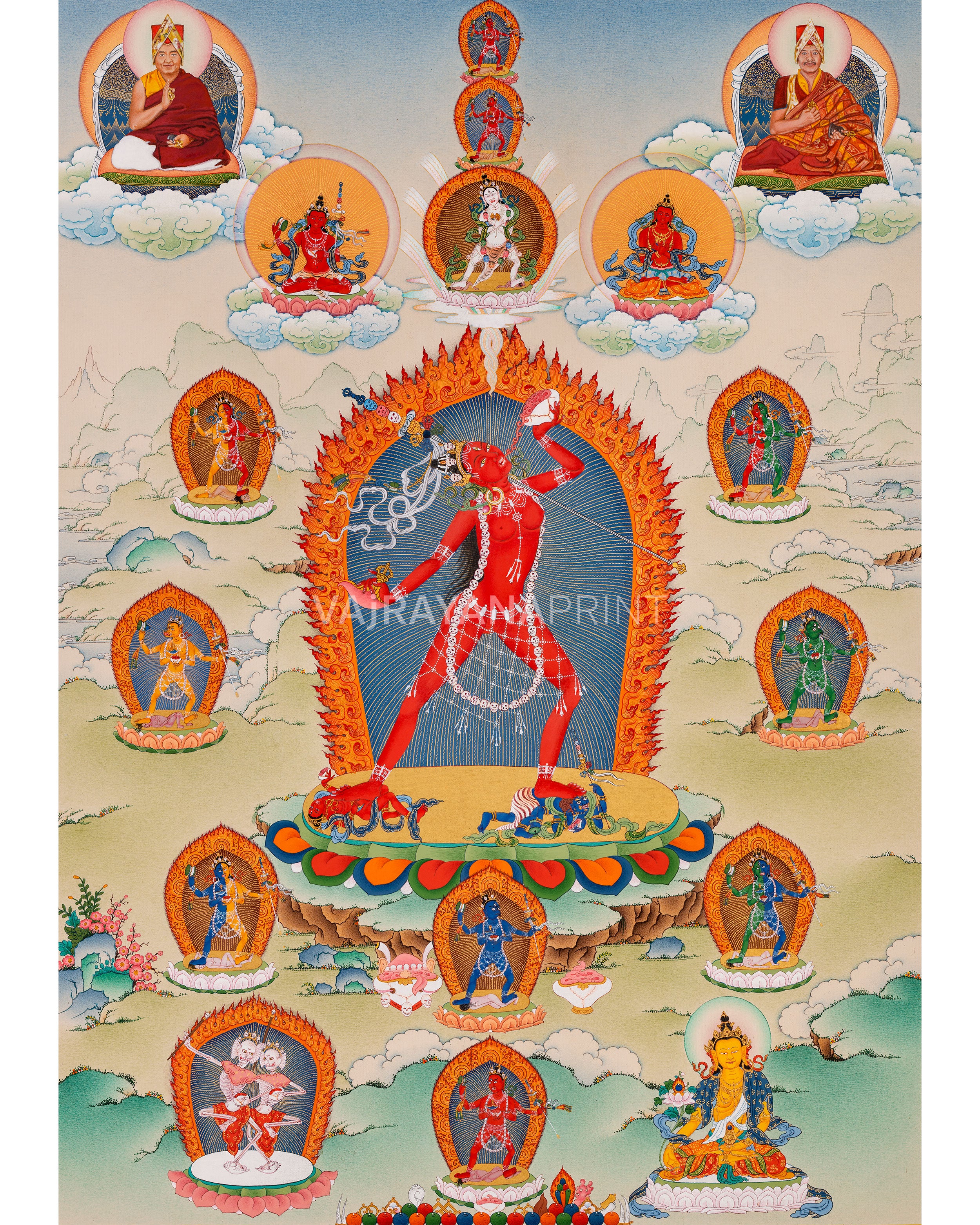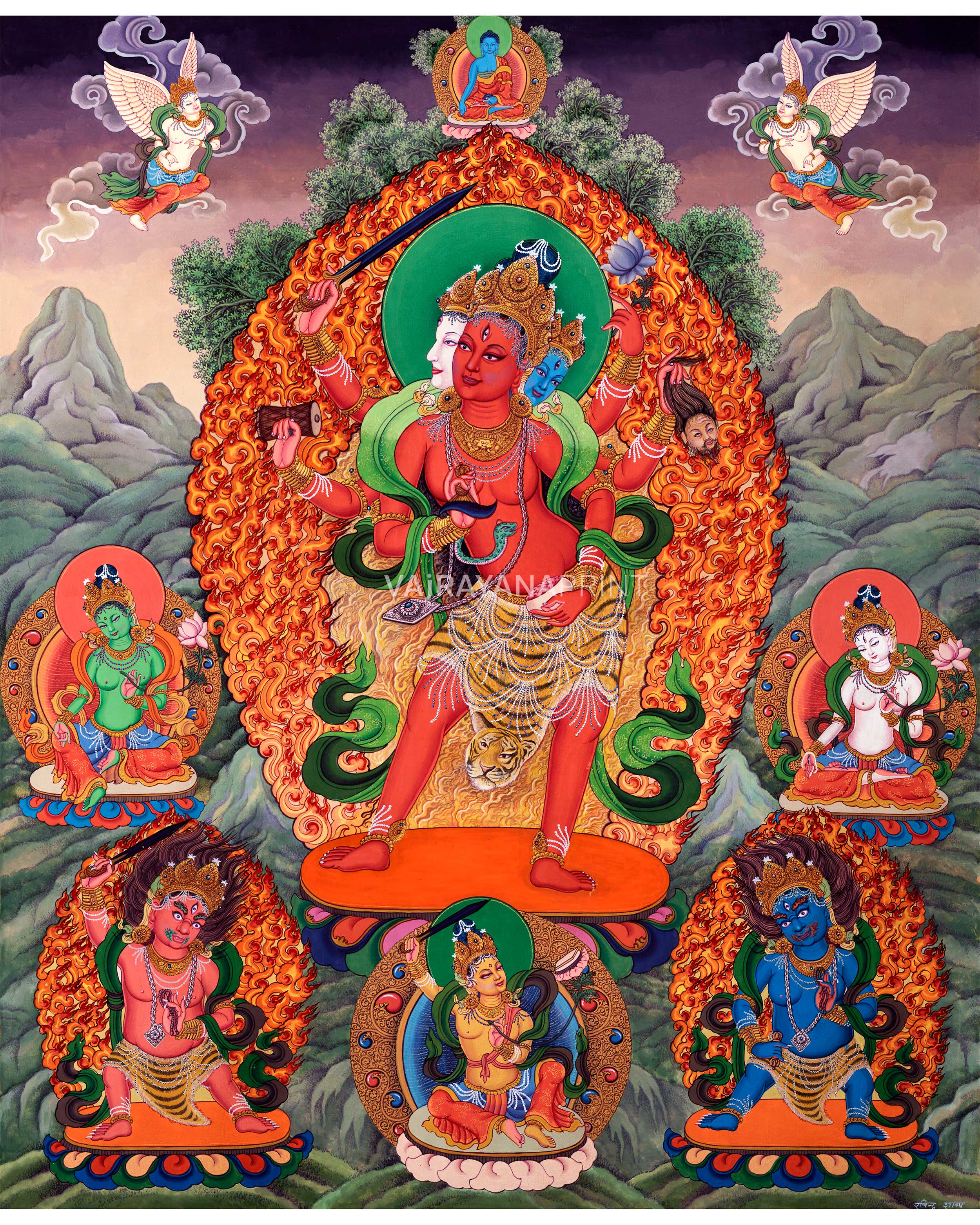Dakini Prints
58 products
Showing 1 - 24 of 58 products
One of our most popular thangkas is the Dakini thangkas that depict not only the more popular dakinis, such as KuruKulla, Machig Labdron, Mandarava, Vajravarahi, Vajrayogini, and Yeshe Tsogyal but also the less popular ones like Troma Nagmo and Tsundri (Cundi). They have gained their popularity through their esoteric appearance and unique forms.
Dakini: The Embodiment of Enlightened Energy in Buddhism
The term "Dakini" derives from the Sanskrit word "dāk," meaning "sky" or "space," and translates to "sky-goer" or "sky-dancer." Dakinis are significant in Buddhist cosmology and symbolism, particularly in Vajrayana and Tibetan Buddhism. These beings embody enlightened energy and are revered as actual, approachable entities, not just symbolic representations.
Dakinis are often portrayed as dynamic and transformative figures, and they play a crucial role in guiding practitioners through both internal and external spiritual realms. They are considered beings who actively support and facilitate spiritual growth and transformation.
Attributes and Iconography
Dakinis, representing the movement and transformation of energy, are often depicted as vigorous, active, and engaged in dance. Depending on the context and the teachings they symbolize, they may appear wrathful or serene. Wrathful Dakinis, with their fierce postures and the destruction of symbolic instruments, signify the breaking of ignorance and ego.
In contrast, serene Dakinis represent the peaceful aspects of enlightenment and the joy of realization. They may hold symbols like a skull cup, symbolizing the transformation of the ego, or a drum, representing the rhythm of life and the heartbeat of emptiness. Their dances, often performed against the backdrop of the sky or flames, symbolize the interplay of phenomena and the dance of emptiness.
Associated Stories and Beliefs
Buddhist folklore contains various tales that highlight the roles and activities of Dakinis. For instance, the renowned Tibetan yogi Milarepa encountered Dakinis during his meditative retreats. They tested his determination, imparted wisdom, and even occasionally provided sustenance.
Another story involves the interactions between the Indian master Naropa and the Dakini Niguma, who imparted profound teachings that formed the foundation for multiple lineages of Tibetan Buddhism. Dakinis are believed to manifest as lessons, mentors, or catalysts for deeper understanding, whether in dreams, visions, or reality. In tantric traditions, Dakinis can serve as meditation deities for advanced practitioners, assisting them in inner yogas and intricate visualizations.
In summary, Dakinis are vital bridges in Buddhism, connecting the worldly and enlightened realms with their dynamic energy and profound insight. They challenge, inspire, and guide practitioners, ensuring they remain committed to their path and reach their limitless potential. Through their dance, they invite all to join the cosmic rhythm of form and emptiness, leading individuals toward enlightenment and liberation.
























